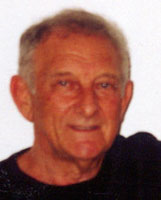 In
1792 records show that there was a sale of 240 acres of land near the western
end of Grand Bahama Island. By 1806 we have evidence that one Joseph Smith had
a plantation at West End and by 1836 there was a recorded population of 370 persons
on the island. Interesting reports from commissioners from this time onwards
talk of the ‘boisterous sea along the south coast’, ‘injurious burning of the
land’, and the island had ‘declined in importance…’ In fact even in these early days people had
already started emigrating away from the island…
In
1792 records show that there was a sale of 240 acres of land near the western
end of Grand Bahama Island. By 1806 we have evidence that one Joseph Smith had
a plantation at West End and by 1836 there was a recorded population of 370 persons
on the island. Interesting reports from commissioners from this time onwards
talk of the ‘boisterous sea along the south coast’, ‘injurious burning of the
land’, and the island had ‘declined in importance…’ In fact even in these early days people had
already started emigrating away from the island…
Grand
Bahama undoubtedly featured in the story of wrecking. The names Fortune Point,
Silver Point, Gold Rock may all be trying to tell us something! For good
measure a famous American Roman Catholic bishop was wrecked on the island late
in the 19th century.
Land
grants give us a small insight into the patterns of habitation on the island.
West End has been mentioned and shortly thereafter the both sides of Hawksbill
Creek were inhabited and gave reason for the name Eight Mile(s of) Rock. There
were small villages east of Bahama Terrace extending to near where the Lucayan
Beach Hotel stands today. A sugar mill was established at Smiths Point and on Petersons
Cay beach there was a small village and Baptist Church that was built in 1901. The
church, later occupied by a hermit, is
still standing today and is the oldest building in the Freeport Area but is in
desperate need of repair.
(Old)
Freetown was very likely named for slaves freed from slaving vessels that had
been intercepted by the Royal Navy. Late in the nineteenth century people from
Freetown used to walk to near Water Cay to catch the sponging vessels working
the Little Bahama Bank. Not so long ago the path they used was still visible.
And Water Cay once grew sisal and also counted many sponge fishermen among its
inhabitants. The persistent story about a pirate named Greybeard using the cay
cannot be corroborated however.
Gold
Rock was once the administrative centre of the island, named in the early days,
Golden Grove. High Rock was another early settlement with agriculture on the
‘white land’ with good fishing offshore. The same was true of Pelican Point.
McLeans Town and Sweetings Cay came to prominence because of sponging with
their easy access to the Little Bahama Bank. Drawbacks here were the paucity of
fresh water and agricultural land.
I
had the privilege of talking to the Rev Thomas Hield (born in1862) before he
died, already a centenarian when I met him, he died at age 105. The kindly
reverend gentleman told me he used to walk the length of Grand Bahama every two
weeks as a supervisor of the Baptist Church. He was a mine of information on
the communities of the island.
At
the turn of the century large scale lumbering became an important economic
activity on the island. Turpentine was produced as a by-product of tree
harvesting. Bahamian lumber was exported to Cuba and later was used as pit
props in Britain and Germany. The lumber industry was, at this time, the largest
employer in the private sector in the entire country.
….Forty
years later one lumberman was to put the island on the map of the world. Much
of what follows was due to this one man.
(From ‘Freeport
Notebook’ © Peter Barratt
)
Peter Barratt is an architect/town planner who was formerly in charge of the
development of Freeport. He writes with first-hand knowledge of the Bahamas
having first visited the country in 1960. Because of his long experience in the
islands he has been able to record many interesting insights, observations and
historic moments that readers should find intriguing.
He has published several books
about the island nation:
Grand Bahama,
Freeport Notebook and
Bahama Saga,
(the latter a historical novel about the islands). He has also written a full
colour work entitled:
Angelic Verses
and two other works are near publication:
The
Port at War and
St Peter Was Never There.
Disclaimer:
The views expressed here are solely those of the author in his/her
private capacity and do not in any way represent the views of
TheBahamasWeekly.com
